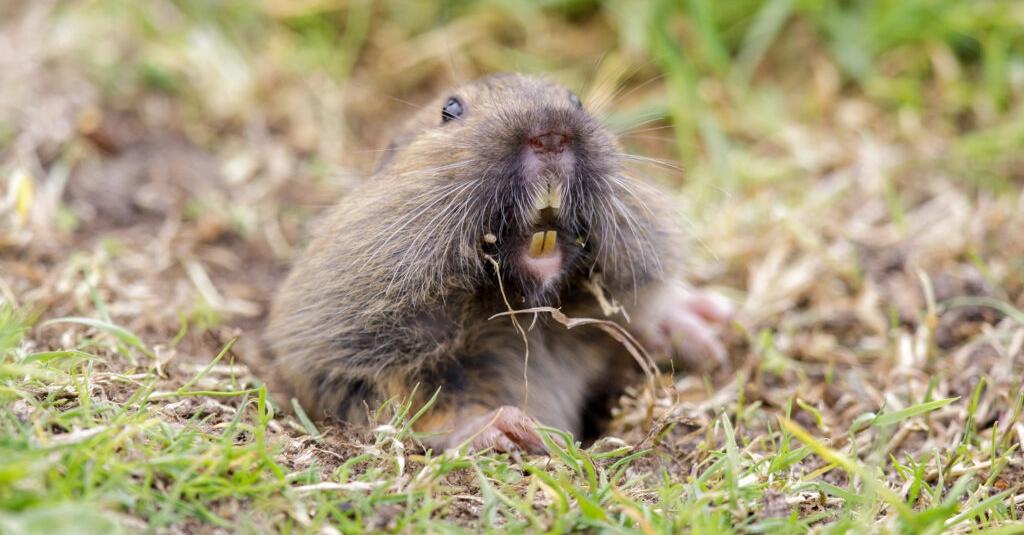Are you curious to know what is a gopher look like? You have come to the right place as I am going to tell you everything about a gopher look like in a very simple explanation. Without further discussion let’s begin to know what is a gopher look like?
Beneath the earth’s surface, a world teeming with activity exists, orchestrated by small, industrious creatures known as gophers. While often unseen, their impact on ecosystems and landscapes is profound. Understanding the physical appearance of these elusive rodents sheds light on their fascinating existence.
What Is A Gopher Look Like?
Gophers, members of the Geomyidae family, possess distinctive features that aid their subterranean lifestyle:
- Size: Typically, gophers range from 5 to 14 inches in length, with their tails adding an extra 4 to 8 inches. They vary in size based on species and gender.
- Body Structure: Their bodies are robust and cylindrical, designed for digging tunnels and navigating underground burrow systems.
- Fur: Gopher fur comes in various shades of brown, ranging from light to dark hues, enabling them to blend seamlessly with their subterranean environment.
- Facial Features: They sport small eyes and ears, adapted to their underground habitat. Their incisors are strong and continuously growing, vital for burrowing and foraging.
- Claws: Equipped with sharp, strong claws on their forelimbs, gophers adeptly tunnel through soil, creating elaborate networks of underground burrows.
Identifying Gopher Species
Several gopher species exist across different regions, each exhibiting unique physical traits:
- Pocket Gophers: Common in North and Central America, pocket gophers have fur-lined cheek pouches, used for transporting food and nesting materials.
- Botta’s Pocket Gopher: Identified by their stocky build and short tails, these gophers are prevalent in western North America.
- Plains Pocket Gopher: Recognizable by their pale yellow to dark brown fur, these gophers inhabit grasslands and agricultural areas.
Let’s find some more interesting facts about different topics on Tallestclub.
Adaptations For Subterranean Life
Gophers’ physical characteristics are finely tuned for their underground existence:
- Digging Expertise: Their powerful forelimbs and claws facilitate efficient digging, creating intricate burrow systems that serve as shelter and storage.
- Fur Resilience: Gopher fur repels dirt and moisture, allowing them to navigate through soil tunnels without impediment.
- Sensory Adaptations: While their eyesight is relatively poor due to their subterranean lifestyle, gophers compensate with acute senses of touch and smell to navigate and locate food.
Conclusion
The enigmatic gopher, with its unassuming appearance, plays a significant role in shaping ecosystems and landscapes. Their remarkable adaptations for life underground, coupled with their diligent burrowing habits, make them both elusive and essential contributors to the natural world. Understanding their physical traits offers a glimpse into the marvels of nature and the intricate adaptations that enable creatures like gophers to thrive in their unique habitats.
FAQ
What Attracts Gophers To Your Yard?
What attracts gophers in your yard? Like most animals (including humans), it’s food. Gophers are herbivores, so their preferred food sources are lawns and gardens.
What Is The Difference Between A Gopher And A Groundhog?
Gophers and groundhogs are both brown and furry and known for digging burrows, and both are herbivores. However, they have several key differences. Groundhogs are bigger, stockier, and they hibernate in the winter. Gophers are smaller and have large, distinctive cheek pouches.
What Does A Yard Gopher Look Like?
Most gophers have some shade of gray or brown fur while their tails have little to no hair at all. Gophers use their large and ever-growing front teeth to break up soil and rocks while they dig.
How Do You Know If You Have Gophers?
The most common sign of gopher activity will be the crescent-shaped mounds of dirt. These mounds will often be grouped together and have the dirt collected mostly to one side and will be finer in texture. There will also be a circular plug of dirt in the center.
I Have Covered All The Following Queries And Topics In The Above Article
What Is A Pocket Gopher Look Like
What Is A Gopher Snake Look Like
What Is A Gopher Look Like Inside
What Does A Mole Look Like
What Does A Baby Gopher Look Like
What Does A Groundhog Look Like
What Does A Chipmunk Look Like
What Is A Gopher Person
Large Gopher Like Animal
Are Gophers Dangerous
What Is A Gopher Look Like
